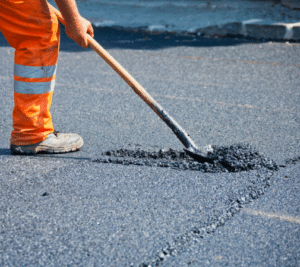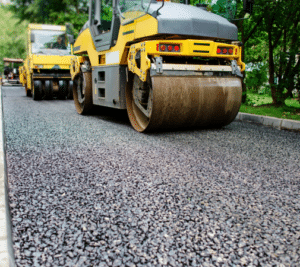Is your driveway cracked and broken? Are the potholes on your street getting bigger every day? Is the road starting to deteriorate? If so, it’s time to think about asphalt repair. There are many reasons why your asphalt might be in bad shape. Heavy rain storms, frost heaves, and soil erosion can take their toll on any type of road surface. Luckily, there’s something that can be done about it! If you suspect that the problems with your asphalt are more than just a temporary inconvenience, read on for some advice about whether or not you need asphalt repair services.
Alligator Cracks
Alligator cracks are formed when the top layer of asphalt starts to separate from the underlying material. This problem occurs when the asphalt begins to dry out and crack. When the asphalt dries out, it loses its elasticity; this means that it doesn’t contract and expand as the temperature changes. Alligator cracks are unsightly and can affect the usability of your asphalt significantly; they can also indicate that your asphalt is in poor condition.
Alligator cracks are not permanently damaging to asphalt but can lead to other, more severe problems if they aren’t fixed. If water accumulates at the bottom of the crack, it can cause corrosion in your asphalt. This corrosion can lead to other problems, including the growth of weeds and moss in the asphalt. Alligator cracks are best dealt with as soon as they are noticed by fixing the underlying problem.
Warping
Asphalt warping occurs when the asphalt is too soft. This problem occurs when the asphalt is laid down too thickly. Warping is more common in asphalt that is laid during the winter months. Cool temperatures and frost heaves cause it. Warping makes the asphalt uneven and is a nuisance for vehicles and humans. You might also see cracks forming alongside the warped areas. Warping usually happens because the asphalt was laid down too thickly. You can prevent warping by using asphalt that is the correct thickness.
Uneven surfaces
Many different issues can cause roads and driveways with uneven surfaces. Sometimes, an uneven surface can be caused by poor drainage, causing water to sit on the surface and erode it. This can lead to potholes forming in the asphalt or even sinkholes. Other times, uneven surfaces can be caused by poor asphalt laying practices. If the asphalt isn’t laid correctly, it can lead to an uneven surface.
Uneven surfaces are a nuisance for drivers but can lead to other problems. If the uneven surface is caused by poor drainage, it can lead to water accumulation and potholes forming in the asphalt. If the uneven surface is caused by incorrect asphalt laying, it can lead to water accumulation, uneven wear, and potholes forming in the asphalt.
Water accumulation
Water accumulation is a sign that the asphalt has lost its functionality. Asphalt is porous; this allows it to absorb water and prevent water from flowing onto the road’s surface. Asphalt is designed to be slightly porous, keeping it from getting too hard. However, if your asphalt is too porous, it can accumulate water. Water accumulation is usually caused by poor drainage.
This can be caused by several issues, including inadequate culverts, clogged ditches, and poor asphalt laying. Water that is allowed to sit on the asphalt can lead to corrosion and erosion, which can cause your asphalt to become weaker and more prone to damage.
Loss of color
Over time, asphalt can lose its color. Sun exposure, wind, rain, and other elements can naturally cause asphalt to lose color over time.
Sinkage
Asphalt is laid down as a layer on top of soil or base. As the asphalt is used, it will break down. The soil underneath the asphalt will break down as well. If the soil underneath your asphalt is too poor, it can lead to the asphalt sinking. This is often a problem in areas with heavy soil erosion or sandy soils. If your asphalt is sinking, it can lead to issues such as cracks forming in the asphalt or the surface of the asphalt becoming uneven. If the problem is severe, the asphalt could break through the ground’s surface and even be washed away.
Stains
It might be time for repair if you notice stains on your asphalt. Stains are often caused by cars leaking oil or chemicals onto the asphalt. Leaves, mulch, dirt, and debris can also stain your asphalt, causing discoloration.
Crumbling Edges
Crumbling edges are a clear sign that your asphalt requires repair. Crumbling edges are usually caused by poor drainage. If water can’t move away from your asphalt, it can cause corrosion and break down the edges of the pavement. Crumbling edges can also be caused by improper asphalt laying. If the asphalt is too thick, it can lead to crumbling edges.
Get Asphalt Repair Before It Continues To Deteriorate
Asphalt is a durable and versatile paving material that will eventually break down and must be repaired or replaced. If you notice that your asphalt is starting to break down, you may want to consider scheduling asphalt repair. If you’re unsure what the problem is with your asphalt, you can use this guide to help identify what may be causing the issue. If you notice these signs on your asphalt, don’t hesitate to call us at Saguaro Sealcoat to help!



